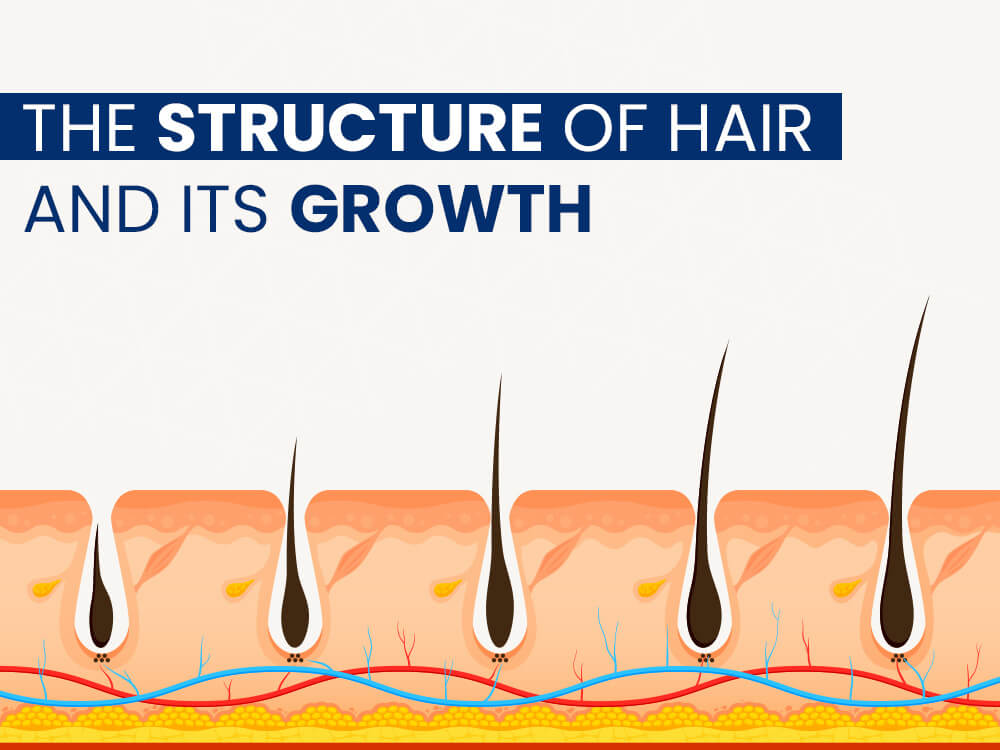
Hair is more than just a part of our appearance—it plays multiple roles in protecting the body. It helps shield the scalp from UV rays, regulates body temperature, and even enhances sensory perception through the follicles’ connection with nerve endings.
Yet despite its everyday presence, few people understand how hair actually grows or what its internal structure looks like. From the visible shaft to the root embedded deep in the skin, each strand of hair is a complex biological system.
In this guide, we break down the full anatomy of hair, explain how the growth cycle works, and highlight the factors that influence hair loss or thinning. Whether you’re curious about how your hair functions or exploring hair restoration options, understanding the basics is the first step.
Different Types of Hair
The human body is covered in two main types of hair.
Vellus hair: Fine, soft, lightly pigmented hair found across most of the body.
Terminal hair: Thicker, darker hair that grows on the scalp, eyebrows, eyelashes, armpits, pubic area, and in adult men, the face and chest.
Hair Structure
- Hair shaft: The visible part of the hair above the skin’s surface.
- Hair root: The part below the skin that anchors the hair in place.
- Hair follicle: The tunnel-like structure in the dermis that houses the root.
- Hair bulb: The enlarged base where cells divide and hair forms.
- Hair papilla: The vascular structure inside the bulb that supplies nutrients.
- Arrector pili muscle: A small muscle attached to follicles that causes hair to stand when contracted.
- Sebaceous gland: Produces sebum (oil) to keep hair and skin lubricated.
How Does Hair Grow?
New cells form in the hair bulb and undergo keratinization—a process that hardens the cells into a strong protein called keratin. These cells push older ones up, gradually emerging from the scalp as visible hair.
Scalp hair typically grows 1 cm per month. Texture is determined by the follicle’s shape: round follicles produce straight hair, while oval or curved follicles produce curly hair.
Hair Growth Cycle
- Anagen phase: Active growth lasting 2–7 years. About 90% of scalp hairs are in this phase.
- Catagen phase: A short transitional phase (2–4 weeks) where growth stops and the follicle detaches from the blood supply.
- Telogen phase: Resting phase lasting several months before the hair sheds.
More details in our hair transplant recovery timeline
Layers of the Scalp
Understanding scalp depth is crucial for optimal punch depth and avoiding follicle damage during hair transplant operations like FUE.
- Epidermis: The outermost skin layer, responsible for barrier protection.
- Dermis: Contains follicles, nerves, and sebaceous glands.
- Subcutaneous tissue: Fatty layer providing insulation and cushioning.
- Galea aponeurotica: Fibrous tissue important in surgery for stability.
- Periosteum: Covers the skull; rarely involved in transplantation but marks the depth limit.
Ethnic Differences in Hair Follicles
Asian hair: Round cross-section, thick diameter, grows straight.
Caucasian hair: Oval cross-section, medium diameter, often wavy.
African hair: Elliptical or flat cross-section, tight curls, more curved follicles.
These structural differences influence graft count, angle, and depth during hair transplant surgery.

Calculate the number of grafts needed for your hair transplant and get an estimated cost for various destinations
What Is Hair Miniaturization?
Hair miniaturization: The gradual shrinkage of hair follicles, turning thick terminal hair into thin vellus-like strands.
Cause: Often triggered by DHT (dihydrotestosterone) in androgenetic alopecia.
Significance: Early miniaturization is a warning sign of progressive baldness and guides timing for treatment or transplant.
Why Follicle Orientation Matters
Follicle angle: Natural direction and tilt at which hair grows from the scalp.
Importance in transplant: Surgeons must replicate this angle when implanting grafts to avoid unnatural, pluggy results.
Challenge: Curved follicles (especially in afro-textured hair) require experienced handling to prevent transection.
What Causes Hair Loss?
Alopecia: Medical term for hair loss—can be temporary or permanent depending on cause.
Triggers: Stress, genetics, autoimmune diseases, hormonal changes, nutritional deficiencies, tight hairstyles.
Normal shedding: 70–100 hairs per day is typical and replaced in healthy cycles.
Understanding how hair grows—and why it stops—lays the foundation for making informed decisions about hair care or restoration. Whether you’re simply curious about your biology or considering treatments like hair transplants, knowing the anatomy and growth cycle of hair can help you set realistic expectations and choose the right solution for your needs.
Fill the form below to get free online hair analysis:






